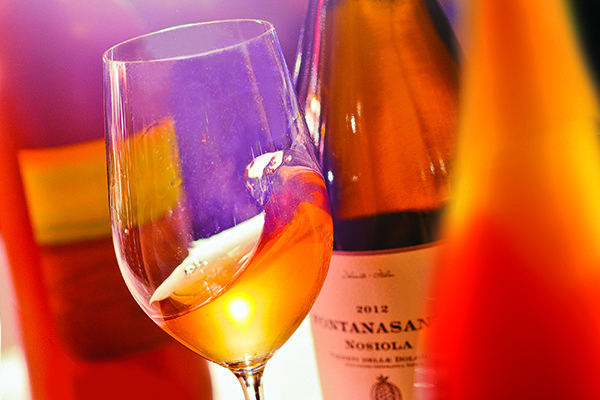Every month Decanter magazine chooses an unusual and exciting terroir to feature in the 'Joy of Terroir' feature. Here is the second half of 2017 selection.
April issue

Steenbok, Western Cape
The 7ha Steenbok vineyard is in the hamlet of Simondium, midway between Paarl and Franschhoek in South Africa’s Western Cape province. It belongs to Rupert & Rothschild, a partnership founded in 1997 by South African Dr Anton Rupert and Baron Edmond de Rothschild of France. The vineyard is planted with Petit Verdot vines which are now 13 years old, and the fruit is used in a Bordeaux-style blend. Named after the small species of antelope found there, the Steenbok site is at the foot of the Simonsberg mountain, part of the Cape Fold Belt that stretches across the province. The soil is mainly clay due to the mudstone washed down from the mountains, with a subsoil of moisture-retaining decomposed granite. These fertile soils are what first attracted the French Huguenots to cultivate the land here in the 1600s.
July issue

Château Lafite Rothschild, Pauillac
Part of the 112ha estate of Médoc powerhouse Château Lafite Rothschild in Pauillac, Bordeaux, this parcel surrounding the château buildings is known as Plateau de Lafite. It is planted with Cabernet Sauvignon, Merlot and small amounts of Cabernet Franc and Petit Verdot on limestone subsoils topped by gravel mixed with aeolian sand. The sun-exposed plateau is 25 metres above the Gironde estuary and bordered by oaks, poplars and willow trees. Some of the vines date back to 1886, but the average age is 40 years old. They produce fullbodied, structured and ageworthy red wines. Headed by Baron Eric de Rothschild since 1974, the family acquired Château Lafite in 1868. However, Lafite’s history dates back to the 14th century, when it was a fief known as ‘la hite’, meaning ‘hillock’ in the Gascon language.
August issue

McGraw Vineyard, Okanagan Valley
McGraw Vineyard covers 2ha of Lake Okanagan’s southeastern shore in Naramata, a sub-region of the Okanagan Valley in the Canadian province of British Columbia. The vines pictured are Gewürztraminer, planted in 2000 by Dr Bob and Aliky McGraw, after whom the vineyard is named. They own Kettle Valley Winery, which uses this site to make its aromatic whites. The soils are alluvial gravel and glacial silt, which is notably coarser under the patches of pale foliage. Beyond the old willow tree and across the lake looms Giant’s Head hill, part of an ancient ridge of volcanoes. Formed by the Okanagan Fault, which runs beneath the still waters, Lake Okanagan moderates the vineyard’s temperatures, sometimes impacting it by up to 6°C. A family of black bears lives in the area; one year they ate almost all the fruit on the nearby Merlot plot, but evidently have no liking for Gewürztraminer.
Photograph: Cameron Ferguson
September issue

L’Hermite, Hermitage, Rhône
L’Hermite vineyard covers 1ha of the northern Rhône’s Hermitage appellation. The Cave de Tain cooperative has owned L’Hermite since 1967, when it was bequeathed by its founder Louis Gambert de Loche, pioneer of the French appellation system. The only variety permitted is Syrah, which makes the intense, meaty reds for which Hermitage is famous. The average age of the vines is 25 years, but grapes have been grown here for more than two millennia. The steep, south-facing inclines of L’Hermite reach 260m altitude, and hand-built stone walls prevent the sandy, granite soils from eroding. The site is named after the region’s legendary figure, ‘L’Hermite’ – the 13th-century wounded knight who sought refuge here. On the horizon is the Chapelle St-Christophe, rebuilt in 1861 upon the ruins of a 12th-century chapel.
October issue

Finca Los Carolinos, Uco Valley
Finca Los Carolinos covers 23 hectares of the Chacayes sub-appellation in Argentina’s Uco Valley, which runs along the Tunuyán river in Mendoza at the foothills of the Andes. The vineyard is owned by Dominio del Plata, founded in 1999 by Susana Balbo, and the sevenyear- old Malbec vines here grow at 1,100m altitude, receiving lots of sun exposure in an otherwise cool climate. In the distance, the Cordon del Plata or ‘Silver Range’ can be seen, with its snow-capped peaks that rise above 5,000m. Vital snowmelt flows down mountain streams which nourish the region’s vines. Chacayes’ soils vary between alluvial stones and colluvial gravel, along with some sandy loam that aids drainage, and the thick-skinned Malbec berries grown here give medium-bodied, dark-hued wines with fine-grained tannins.
November issue

Jack London Vineyard, Sonoma
The Jack London vineyard covers 51ha within the Sonoma Mountain AVA in the small town of Glen Ellen, California. It’s named after the American novelist Jack London, who bought the estate – including a winery that historic Californian duo Kohler & Frohling had owned – in 1911. By that time, grape prices had plummeted to just $11 per tonne, and the vineyards were replaced with corn and alfalfa. Thankfully, they were reinstated and today’s vines are 30 years old. The plants in the foreground are Cabernet Sauvignon, and Zinfandel stretches towards the forest. These slopes were volcanically formed, influencing its soils which are now overlaid with clay loam. Since 1976, they have been the source of Kenwood Vineyards’ ‘Jack London’ red wines, which are known for their full-bodied character and rich flavours.
Translated by Sylvia Wu / 吴嘉溦
All rights reserved by Future plc. No part of this publication may be reproduced, distributed or transmitted in any form or by any means without the prior written permission of Decanter.
Only Official Media Partners (see About us) of DecanterChina.com may republish part of the content from the site without prior permission under strict Terms & Conditions. Contact china@decanter.com to learn about how to become an Official Media Partner of DecanterChina.com.




Comments
Submit